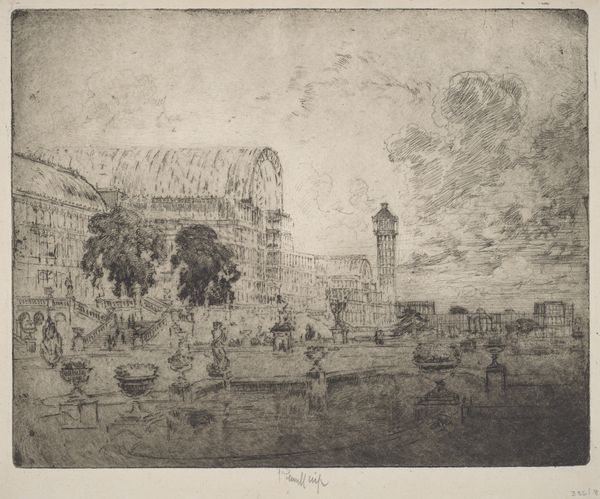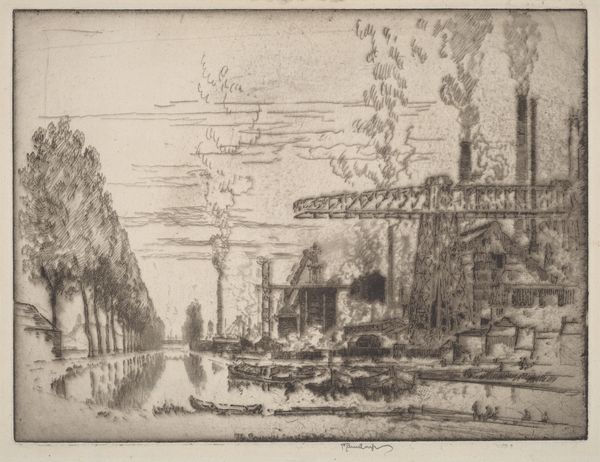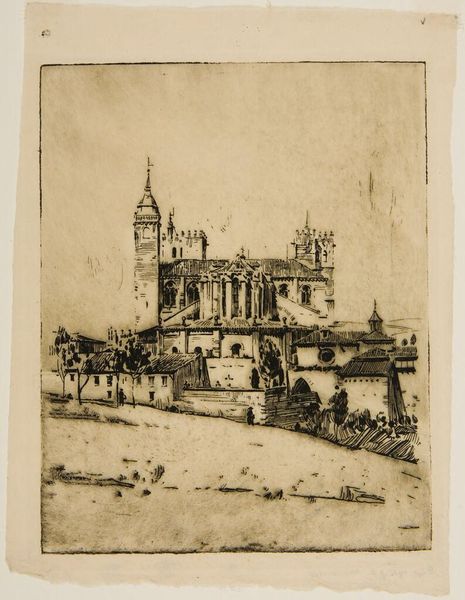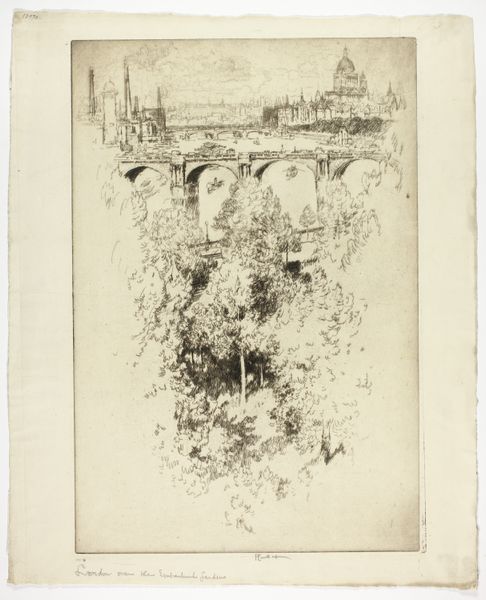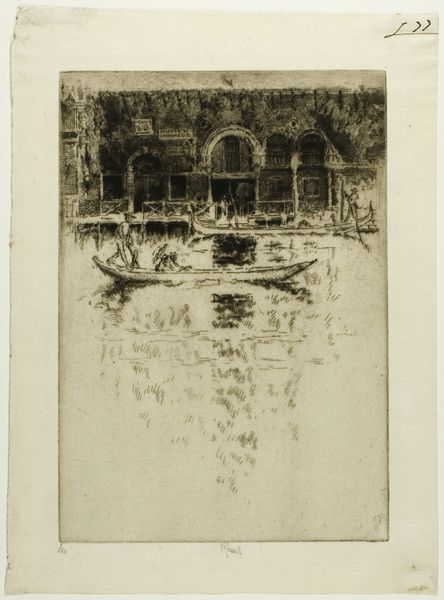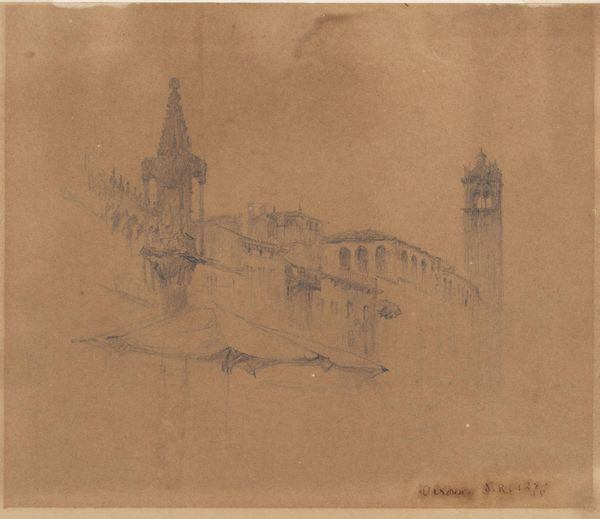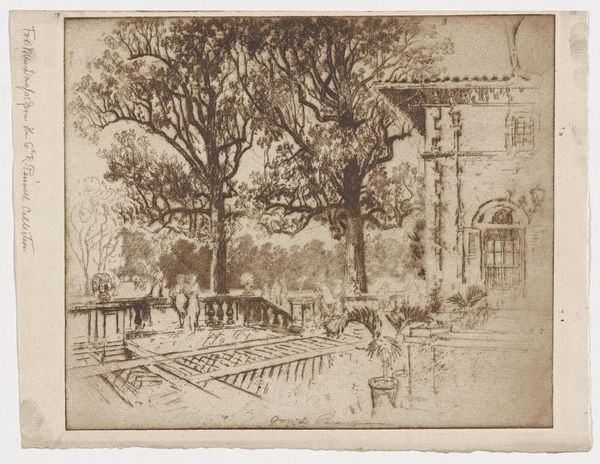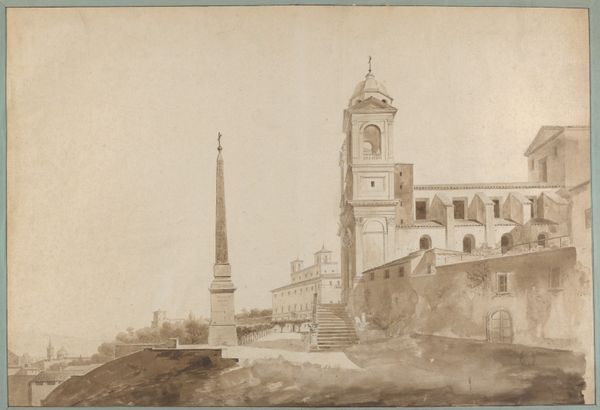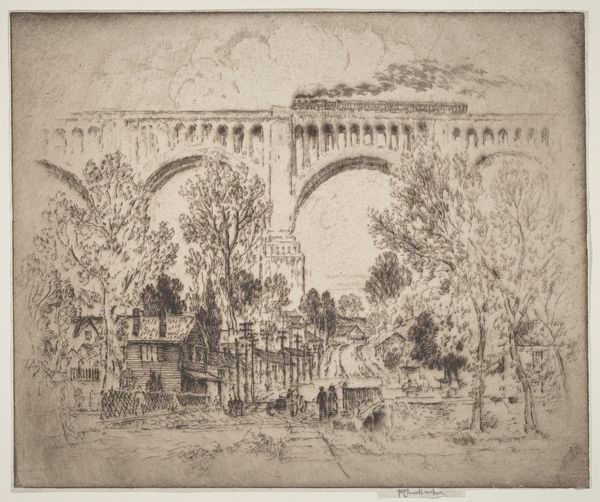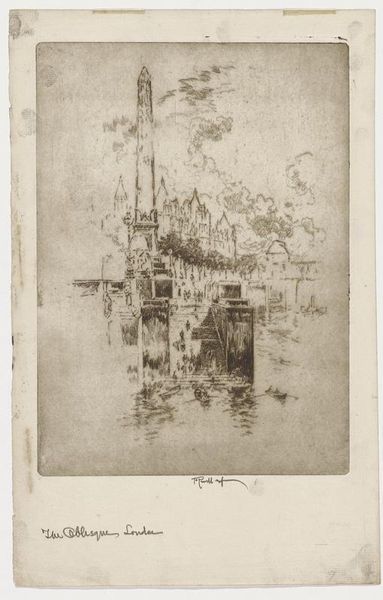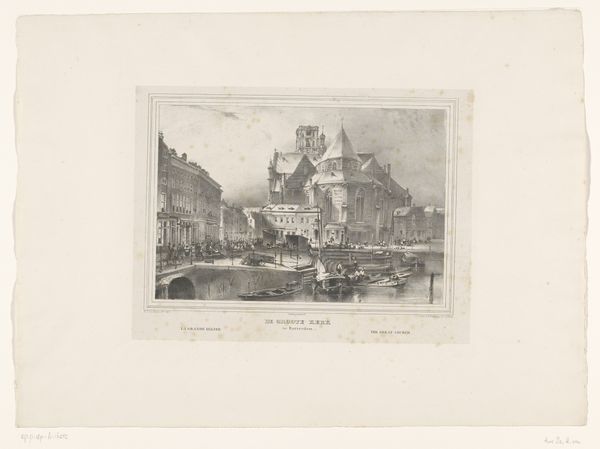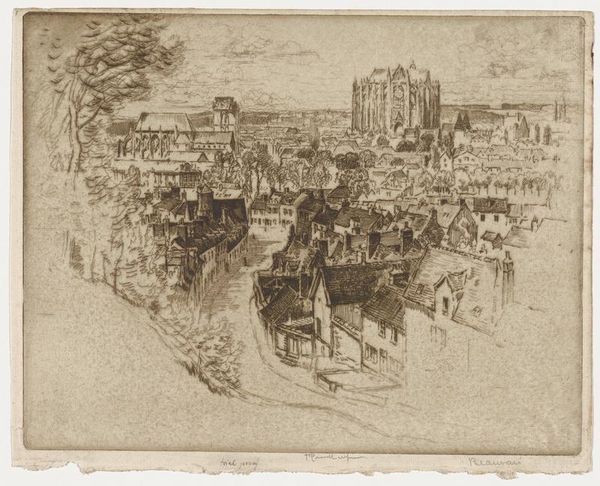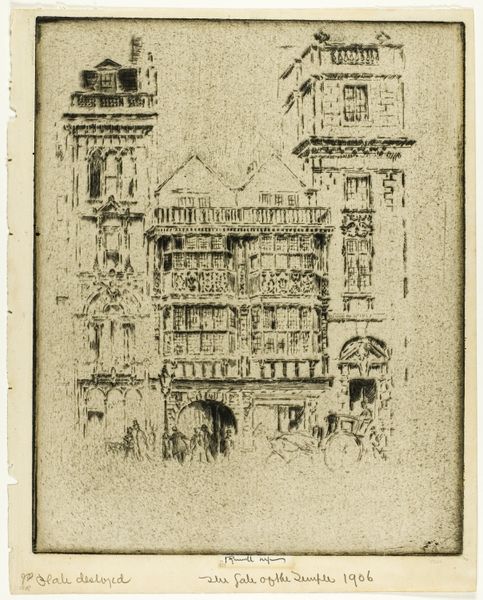
Dimensions: 220 × 278 mm (image); 252 × 330 mm (sheet)
Copyright: Public Domain
Curator: "The Crystal Palace," a 1905 etching by Joseph Pennell. Look at the sheer texture of the etching, so delicately wrought! Editor: My first impression is one of nostalgia, or perhaps loss. The sepia tones and the somewhat blurry, indistinct lines create a dreamlike, ephemeral quality. Curator: Yes, Pennell certainly captures a sense of fading grandeur here. Etching as a printmaking process is quite labour-intensive, involving acid-resistant coatings and multiple applications to achieve such depth. It speaks to the architectural ambition, doesn't it? And the image hints at this building’s cultural impact. Editor: Indeed. Notice how the structural elements of the Crystal Palace dominate the composition. The eye is drawn to the elaborate, arched roofline. Then we’re presented with formal arrangements of structures across the immediate scene. Pennell creates visual rhymes, linking foreground to background. Curator: We have to consider the historical context too. The Crystal Palace, initially erected for the Great Exhibition of 1851, stood as a symbol of Victorian innovation and British imperial power. Its eventual destruction by fire in 1936 marked the end of an era. The etching was done earlier in 1905 and contains within it this sense of impending loss. Editor: Good point. The muted palette emphasizes this sense of melancholy, the subdued, desaturated hues further conveying decay. There is also the relationship between this grand, impressive architecture, with the natural elements which have the opportunity to outlive it, trees and clouds adding a wistful poignancy. Curator: Right, and thinking about Pennell as a key figure in promoting etching as a legitimate art form is relevant here. It's not simply documentation. The print is deliberately crafted with aesthetic considerations, raising important questions about labour in both the craft and high arts worlds. Editor: I see what you mean. It makes one consider the relationship between structure and environment, grandeur and ruin, the monumental and the intimate. It's all beautifully ambiguous. Curator: So, it’s a compelling illustration of both Victorian aspiration and transience. Editor: Yes, I think I appreciate it a little more having considered its formal attributes and cultural context. It becomes a very resonant piece when one is considering its layered details.
Comments
No comments
Be the first to comment and join the conversation on the ultimate creative platform.
